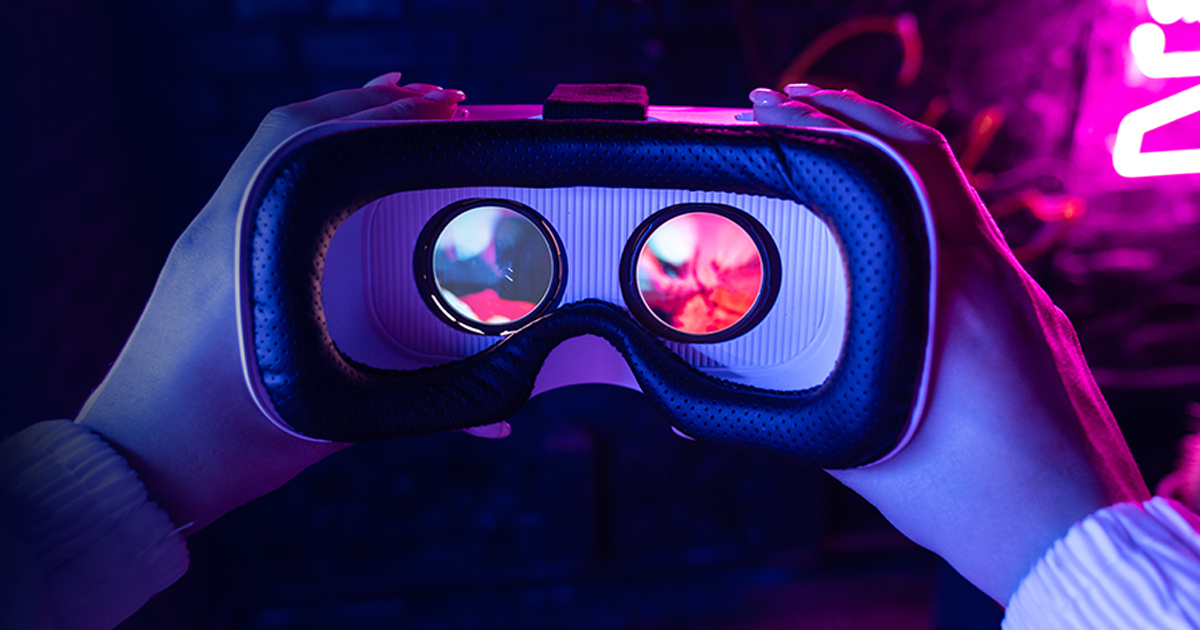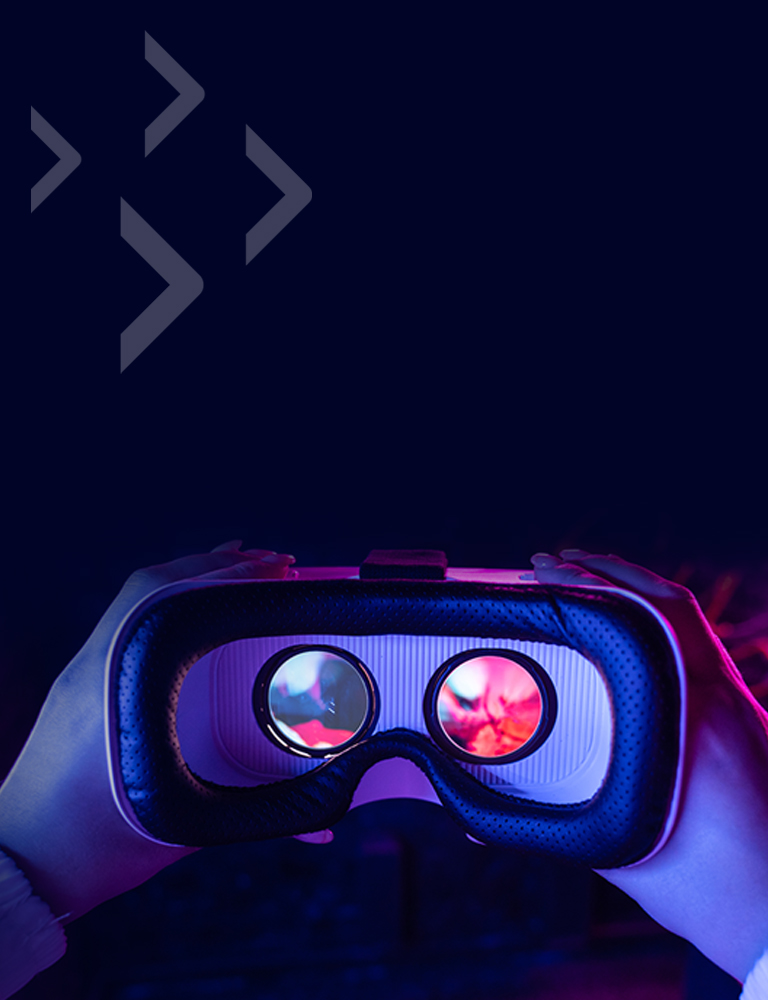Course Provider

What will you learn in this course?
- The course will introduce to future centric Augmented & Virtual Reality systems and platforms, as well as tools like AR foundation, Unity, Vuforia, etc. Learn with industry-use cases and understand the comprehensive introduction, fundamentals, and an exhaustive view of AR VR with case study and a projection to the future.
- In this 120-hour of course (blended mode: 60 hrs theory and 60 hrs practical), with 12 tools, 1 project and 8 assignments, you will be technologically ready and updated with emerging immersive technology of AR VR.
- By the end of this course, learners will develop a thorough understanding of how Augmented & Virtual Reality works and how it is transforming businesses.
- You will be skilled to write codes in visual studio and other editors with C# programming language, implement APIs, and use Unity platform for 3D modelling, AR, VR, A-frame, etc. thus gain practical skills needed for Augmented & Virtual Reality projects
Certificate Course in Augmented & Virtual Reality
-
 Skill Type
Emerging Tech
Skill Type
Emerging Tech -
 Domain
Virtual Reality
Domain
Virtual Reality -
 Course Category
Bridge Course
Course Category
Bridge Course -
 Certificate Earned Joint Co-Branded Participation Certificate
Certificate Earned Joint Co-Branded Participation Certificate -
 Nasscom Assessment Available
Nasscom Assessment Available -
 Course Covered under GoI Incentive
Yes
Course Covered under GoI Incentive
Yes -
-
 Course Price
INR 3390
Course Price
INR 3390 -
 Course Duration
120 Hours
Course Duration
120 Hours
-
Why should you take this course?
The course is designed to give an understanding of Augmented & Virtual Reality, visualization, and data. With more than 50% of the course comprising of practical on some popular platforms like Unity, etc., learners will understand the nuances while acquiring hands-on skills. On completing this course, you will earn Augmented & Virtual Reality certification co-branded by C-DAC, MeitY, NIELIT and NASSCOM FutureSkills that is recognized by the industry as a credible micro-credential. Depending on your current skills, you can explore tracks for data engineering or application engineering. Leverage the course to grow within your organization or switch your profile.
According to a recent estimate, AR and VR are expected to grow into a $95 billion market by 2025. The strongest demand for the technologies currently comes from industries in the creative economy—specifically, gaming, live events, video entertainment and retail—but will find wider applications in industries as diverse as healthcare, education, the military and real estate over time. Under this program Government officials will be trained on Emerging technologies like AR VR & AI, which will help them make their work done in totally different manner like creating new methods for documentation, near future this would help officials to work on new government & IT projects which will enable’s exposure to futuristics technology world.
Who should take this course?
- The course is targeted towards Engineering graduates, MCA/MSc.
- Students enrolled in the training institutes /university, who wish to venture into the domain of Augmented and Virtual Reality (AR VR) and have interest and passion towards holistic panoramic domain of Immersive emerging technology.
- Participants will find this course to be valuable for navigating their chosen field, thus help the aspirant to enhance their skills, upskill and reskill thus make them ready for Future Technologies, which can leads to open pool of opportunities in AR & VR field.
Curriculum
The Augmented & Virtual Reality course is further split into 7 modules for a structured approach and a pedagogy that mixes theoretical concepts with practical assignments.
-
Module 1: Introduction to AR VR, C# Programming concepts
Starting with an overview of the basic knowledge required before being trained on the core concepts of Augmented Reality and Virtual Reality. Starting with the basic programming concept like Arrays, Variables, Conditional Statements, OOPS Features the course moves on to introduce Unity Game Engine. C# Programming will explain how the technology is used in cases of creating scripts for game objects in Unity.
-
Module 2: Unity Game Engine concepts
In this module, learners will develop Scene with primitive shapes and apply Rotations, Translations scripts to that shape. Learners will also run introductory 3D Shooting Game. By the end of this module, you would have an idea of tools including, Unity Game Engine, Visual Studio Community.
-
Module 3: VR Development (Google Cardboard, Oculus)
In this module, learner will have exposure to various tools including Google Cardboard VR, Oculus VR. Google Cardboard VR will give Experience in virtual reality in a simple,fun and affordable way. This platform was intended as a low-cost system to encourage interest and development in VR applications
-
Module 4: Vuforia AR SDK
This module starts with Vuforia AR setup in Unity. learner will develop AR Application using Image Target, Ground Plane. Vuforia Engine detects and tracks the image by comparing extracted natural features from the camera image against a known target resource database. This module also includes Cloud Recognition will include Image Recognition solution that enables developers to host and manage Image Targets online.
-
Module 5: AR Foundation (ARKit, ARCore)
Learner will learn ARCore using three key technologies to integrate virtual content with the real world as seen through your phone's camera that allows Six degrees of freedom give permission to the phone to understand and track its position relative to the world.
-
Module 6: HTML5, CSS 3 and AFrame
Learner will learn basics of HTML and CSS which is use for designing purpose in A-Frame. HTML include basic tags including img,br and attribute includes bgcolor, style.
A-Frame is a web framework for building virtual reality (VR) experiences. A-Frame is based on top of HTML, making it simple to get started. But A-Frame is not just a 3D scene graph or a markup language. At the end of this module learner will be able to use A-Frame aims to define fully immersive interactive VR experiences that go beyond basic 360° content, making full use of positional tracking and controllers.
-
Module 7: Spark AR Studio
- Spark AR is a studio tool from Facebook that allows users to create their own AR effects for mobile. Learner will learn Face effect using Face Tracking feature.
- Project: In this, the participants will be working on an industry-relevant project using real data.
Tools you will learn in this course:
The Following software tools will be explored in the course
- Unity Game Engine LTS version (2019.4.xx)
- Visual Studio Community 2019
- Android Build Support and Android SDK Tools
- Web GL Build Support
- Android Studio and SDK Tools
- Spark AR Studio
- Google VR SDK
- Vuforia AR SDK
- Oculus VR SDK
- AR Foundation
- VRTK, Lean Touch and other packages will be provided to participants during course.
FAQs
Fresher’s/ Graduates with science background can take up this immersive emerging technology and get ready and updated with upcoming market requirements. Working professionals with a background in web design, 3D, Graphics technology must reskill/upskill with this course. For roles including, Unity S/w develpor,3D/Graphics designer, Game engine developer, etc., this course could be a starting point to navigate the world of AR VR. Science graduates, MAYA academy certified members must upskill themselves to understand the foundational basics and complete holistic panoramic view of this AR VR technology.
Yes, if this is your area of interest, you can! The course requires a sound understanding of C#, Graphics, 2D, 3D, and with additional self-study, you will be able to complete the course
Yes, adopting augmented reality into the operations of small and medium businesses helps to accomplish numerous things. You can provide a great customer experience irrespective of the industry, build a brand reputation and efficiently run the operations.
Augmented reality is emerging as one of the most advanced technologies and is predicted to have an estimated global market worth of 340 billion USD by 2028. With new advancements and applications of AR introduced day by day, AR is sure to become a part of our lives in the future. To know more, read our blog published on Medium.




